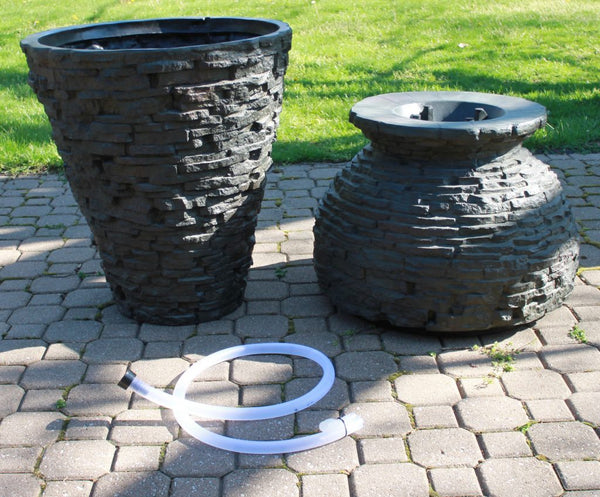If you live in a colder winter climate and have chosen to allow your pond to run throughout the winter, then you are probably already aware that this will require maintenance in bitter temperatures. Whether or not you decide to allow your pond to run all winter long, below are some items to consider.
Water
Just as your water levels need replenished due to evaporation in the warmer weather, the same is true for colder temperatures as well. Adding water may become more challenging in the winter with normal water sources shut down. Some options for adding water include: making multiple trips with a bucket or running a hose from an internal faucet. There are many pond owners that perform partial water changes on their ponds during the winter to relieve the pond of harmful buildup of ammonia and nitrites. While adding water is not convenient in the winter, it is an important part of maintaining your pond during these cold temperatures.
Water Circulation
Be aware, that pump size is a critical factor in determining a waterfall’s ability to operate during the winter. In most situations, a pump size of 2,000 gph or bigger can be operated during the winter safely. If you are presented with many sub-zero temperature days, your system may not function normally due to ice build-up. Carefully monitoring your pond during these extreme temperatures is important. It may become necessary to shut your system down until the ice has melted and normal water flow can be restored.
If you decide to shut your pond down due to these extreme temperatures, be sure to consider a few maintenance steps. Always be sure to follow your manufacturer’s recommendation for properly storing your pump. Also remove and rinse the filtration media and place in a frost-free location for ease of replacement in the spring.
Fish
If your pump has been shut down, it is important that some form of aeration be provided to allow for an opening in the ice. This allows for the escape of harmful gases to be released.
There are several great options when considering alternate forms of aeration. The Aquascape AquaForce® is a great winterizing pump. This recirculating bubbler pump is designed to sit in the pond and oxygenate the water. Simply place the pump in the water, positioning the discharge pipe below the surface of the water. The bubbling from the pump will maintain a hole in the ice, which will help increase oxygen levels and allow for dangerous gases to escape.
The addition of a floating de-icer in combination with the bubbler pump is recommended for extreme prolonged cold winters to insure there will be a hole open in the ice all winter long.
In Conclusion
Whether you run your pond all winter or shut it down is a decision to have to make based on how much maintenance you want to perform during these extreme temperatures. The beauty of beautiful ice that is created from the water may be rewarding enough to consider maintaining it all winter long.



